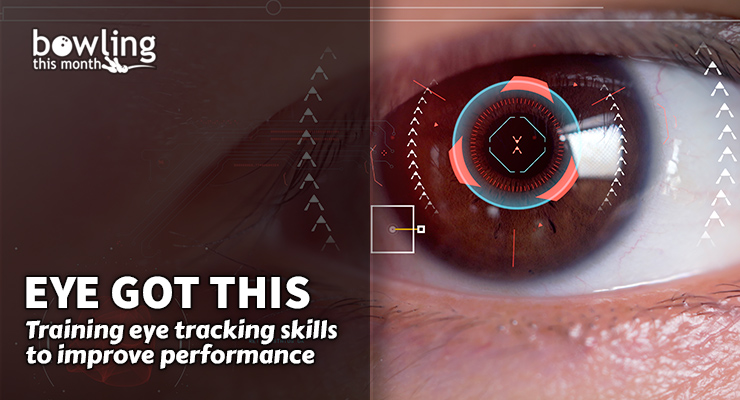Over the past decade, we have seen more and more bowlers perceive the sport in an athletic manner. These athlete-minded bowlers are eating better and integrating sport science methods such as dynamic warm-ups, working out, and cooling down. This trend is particularly evident at the elite college bowling level.
One of the areas of training that isn’t as prevalent in bowling as it should be is eye tracking. As a coach, I am always on the search for training that can yield a possible competitive edge. This was my catalyst to pursue sport science research and better understand training cause and effect sequences informed through science and research. While the term “eye tracking” is more often used as the study of eye movement and focus (particularly as it relates to advertising), it is also simply the movement of your eye as it observes an object in space. For example, an outfielder in baseball “tracks” the flight of a ball hit in his direction in order to make the adjustments necessary to catch it.
The ability to track a bowling ball as it progresses down the lane while interpreting subtle ball motion changes is one of the most important skills a bowler can possess to reach a high level of performance. Tracking proficiency is born out of disciplined training over time, while the interpretation of ball motion change is one that emerges from knowledge and experience. If eye tracking skills are poor, the most knowledgeable athlete will not internalize accurate information to interpret. Accordingly, this article will focus on developing eye tracking skills on and off the ...
This article is only available to Bowling This Month subscribers. Click below to get instant access to this article and all of our other premium instructional content.
Subscribe to Bowling This Month
Already a Bowling This Month subscriber? Click here to log in.
Image Credits: Eye image (©iStock.com/toondelamour) is licensed for use by BTM and is the copyrighted property of its original creator.
